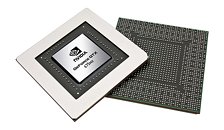
TechPowerUp GPU-Z v0.7.0 Released
TechPowerUp released the latest version of GPU-Z, the popular graphics subsystem information, diagnostic, and monitoring utility, which gives you in-depth information about installed graphics hardware, and lets you monitor various parameters in real-time. With version v0.7.0 of GPU-Z, we focused on adding and improving support for new GPUs.
To begin with, it features support for AMD Radeon HD 7990 "Malta" dual-GPU graphics card, along with support for Radeon HD 8550M, HD 7340, HD 7290, and HD 8670D "Richland" on the AMD front; and GeForce GTX 680MX, GTX 675MX, GT 218, and 9400 GT (rare GPUs), on the NVIDIA front. Voltage monitoring is improved on Radeon HD 7790.DOWNLOAD: TechPowerUp GPU-Z 0.7.0 | GPU-Z 0.7.0 ASUS ROG Themed
The change-log follows.
To begin with, it features support for AMD Radeon HD 7990 "Malta" dual-GPU graphics card, along with support for Radeon HD 8550M, HD 7340, HD 7290, and HD 8670D "Richland" on the AMD front; and GeForce GTX 680MX, GTX 675MX, GT 218, and 9400 GT (rare GPUs), on the NVIDIA front. Voltage monitoring is improved on Radeon HD 7790.DOWNLOAD: TechPowerUp GPU-Z 0.7.0 | GPU-Z 0.7.0 ASUS ROG Themed
The change-log follows.




